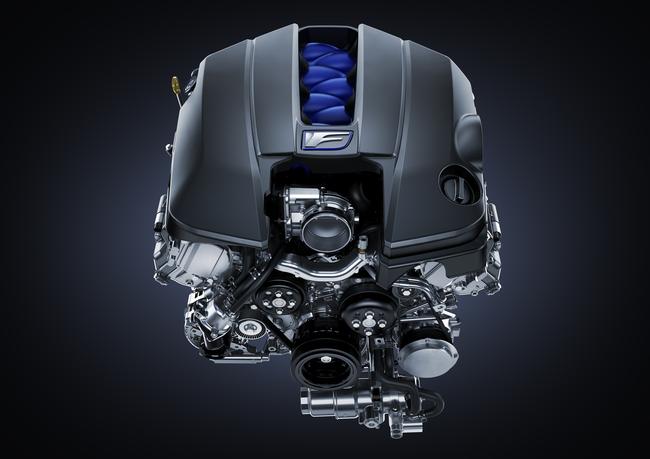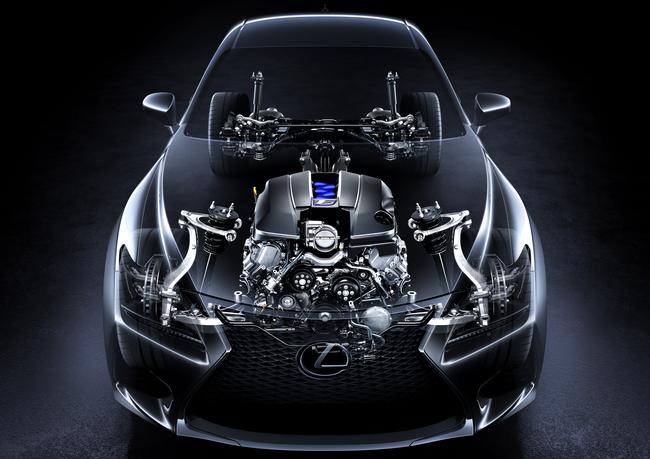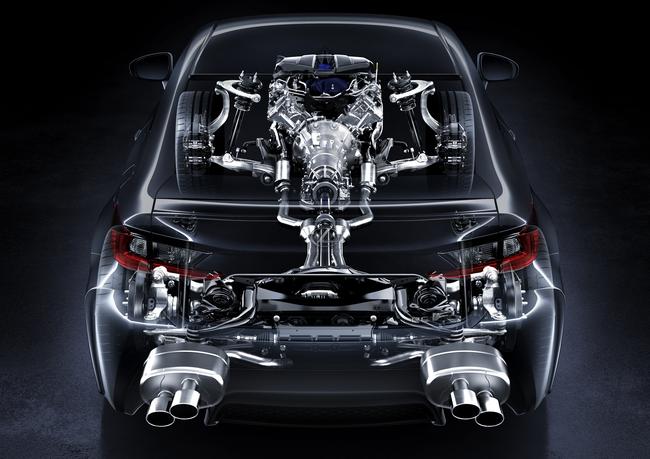The new Lexus RC F makes its European debut at the 2014 Geneva motor show, and will go on sale throughout Europe this autumn. The RC F features a new 5.0-litre engine developing 450 hp and 520 Nm of torque, making it the most powerful V8 performance car yet developed by Lexus.
The RC F combines a newly calibrated eight-speed transmission with the installation of a Torque Vectoring Differential (TVD), enhancing traction and control to guarantee better levels of handling and performance.
All-new high performance 5.0l V8 engine
The most powerful Lexus V8 F model yet built features a 5.0-liter, 32 valve engine which develops 450 hp and 520 Nm of torque. The cylinder heads and all moving parts are newly designed to provide increased maximum power at higher engine revolutions. For the first time in a Lexus performance engine, the RC F uses the Atkinson cycle at cruising speeds for enhanced fuel economy, and then switches to the Otto cycle at higher revolutions to realize higher performance levels.
Atkinson cycle is characterized by expansion stroke longer than compression stroke and can achieve a higher thermal efficiency than the Otto cycle; the downside is reduced power density. The Atkinson cycle has been used in combination with numerous hybrids, particularly by Toyota, with unconventional valve timing to produce the effect of a shorter compression/longer expansion stroke.
The newly calibrated eight-speed Sports Direct Shift (SPDS) transmission improves linear response to accelerator-pedal operation, for more precise driver control of power and torque delivery. A new system of regulating induction and exhaust sound further enhances driver involvement, creating a deep tone up to 3000 rpm, and a pleasing, higher-pitched tone as revolutions rise freely above 6000 rpm under hard acceleration.
TORQUE VECTORING DIFFERENTIAL
The Lexus RC F incorporates a Torque Vectoring Differential (TVD). The TVD has three operating modes:
- STANDARD, for a balance of performance and high-speed stability
- SLALOM, for an emphasis on better response to steering inputs
- TRACK, for consistent cornering behavior whilst circuit driving, with optimum driver control – with a vertical G-sensor to provide improved vehicle stability.

Lexus RC-F technical specifications
| TECHNICAL SPECIFICATIONS | RC F |
|---|---|
| Horsepower | Over 450 hp |
| Torque | Over 520 Nm |
| Transmission | Eight-speed Sports Direct Shift (SPDS) |
| Electronic Controlled automatic Transmission with intelligence (ECT-i) | |
| Seating capacity | 4 |
| Length | 4705 mm |
| Width | 1850 mm |
| Height | 1390 mm |
| Wheelbase | 2730 mm |
| Driven wheels | Rear-wheel drive |
| Kerb weight | Targets below 1,800 kg |
| Brake type | Four-wheel power assisted disc brakes (Brembo manufactured for Lexus) with Anti-lock Braking System (ABS) and Electronic Brake force Distribution (EBD) and Brake Assist (BA) |
| Wheel sizes | Fr 19” x 9J |
| (front and rear) | Rr 19” x 10J |
| Tire sizes | Fr 255/35/19 |
| Rr 275/35/19 | |
| 0 – 100 kph | Targets faster than IS F |
| Top speed | Estimated 270 km/h (electronically limited) |
| Fuel consumption | Targets better than IS F |
Source: Lexus
Romain’s opinion:
Sport cars use more and more technology to reach lower fuel consumption when power is not needed. Changing combustion cycle through variable valve actuation is according to me a cheap way to improve fuel economy. How do you think the compromise between fuel economy and performance is done? From which threshold of pedal position or vehicle speed the engine control switches from economy mode to performance mode?




















